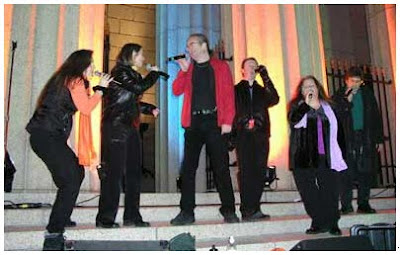Wednesday, May 15, 2019
Pillownaut Muse
After my follow-up DEXA Bone Scan last winter, and the nice article NASA's Human Research Program published about me and other past pillownauts in preparation for the new simulation protocols, I didn't expect much more to happen. It's been many years since my studies, and my blog is now only rarely updated.
I pondered perhaps "over-hauling" this site to be a #SciComm hub -- but honestly, I think there are so many great existing Science Communication sites, and I will work to amplify those. I figured I'd had my 15 minutes of fame, and decided to leave my old blog "as-is" as a historical record of how I lived through the unique experiences of Space Flight Simulations projects at NASA.
But. Every time I think I'll never hear about it again, another author or press outlet comes knocking. Last time it was Charles Wohlforth, and you should definitely still read his great book, "Beyond Earth: Our Path To a New Home in the Planet." My father was very impressed they devoted more space to me than to Neil Armstrong, so we may have to put that on my tombstone.
Along came Minute Number 16...
Muse Magazine asked to feature my studies and chose the same title, just spelled a bit differently! In "Beyawned Earth," writer Jen Mason compiled many of my past blog excerpts, a few older press turns, and many of my personal photographs from quarantine into an exceptional article designed to teach students about space flight and how it affects the "biological packages" that travel in spacecrafts.
Reading the finished product, I was definitely the happiest I've ever been with an interview. I've had TV and radio stations ask me exhaustingly inappropriate questions; sometimes even reputable outlets go for the sensationalist spin by giving the study clever little [incorrect] nicknames or dwelling on incidental details, like how we manage to shower during simulations, or that we cannot have sugar or caffeine or salt in quarantine. Sure, those things are challenging, but not life-threatening. They pale in the quest for good data.
However, MUSE Magazine hired a skilled and serious writer who truly nailed the science. After literally a decade of interviews in varied formats, and even being featured on the NASA website itself, this was really the first full-length article that revolved around MY OWN WORDS REGARDING MY OWN EXPERIENCES. This is the closest article to what I would have written myself. Maybe someday, some outlet will invite me to do so. Hope springs eternal.
I was gratified that this particular entity put the science in detailed and accurate terms, because it's directed at students and young adults potentially getting started in scholastic concentrations, and beginning to think about choosing majors.
Issue came out in March, and I was thrilled to receive copies by May, after I returned from my 6-week trek in Europe. You can order back issues of Muse Magazine yourself, or subscribe your teens, at Cricket Media.
My entire list of articles has been updated to include the last 2 years.
Thursday, May 2, 2019
AstroCappella
I've had such a fun time listening to "AstroCappella" music by an amazing group called The Chromatics, who recorded their first CD with the help of a NASA IDEAS grant (Initiative to Develop Education through Astronomy and Space Science).
NASA Goddard Space Flight Center, where the a-capella group originated, still features the singers on their website, where you can hear a lively version of The Sun Song...

Left to Right: Padi = AstroPhysicist Soprano
Karen = Solar Scientist Alto & Mezzo
Alan = AstroPhysicist Tenor
Barry = Architect Tenor
Deb = Database Designer Soprano
John = Satellite Astronomer Baritone
I also searched around YouTube (a bit of a trick, since there is also an Oregonian Synth-Punk band with the same name), but I found the AstroCap YT Channel, which features a few clips of the spacey-group's live performances.

This harmonious form of musical astronomy was developed by the members of the Chromatics for education and public outreach, and all of their tunes are "astronomically correct"! My favorite was their humorous "Bad Hair Day" -- but they also cover comets, asteroids, Mars exploration, the phases of the moon, the habitable zone of our solar system, gamma rays and even a Historical Overview of Telescopes in the "HST-Bop." Highly entertaining!
They were even commissioned by the Johannes Kepler Project to write a special song for the International Year of Astronomy in 2009 called "Shoulders of Giants", which detailed Galileo's first observations of space through his newly-developed telescope in 1609.

They even have a Christmas CD! I purchased this entire set on iTunes along with some of their other selections, and I'm rather partial to "Pachelbel's Tantrum" ;)
Join their Facebook Fan Page or follow the Chromatics Twitter Feed to see when and where they conduct public performances.
Or, check out their AstroCapella Project to see how you can make the most of "the marriage of music & astronomy" to entertain at schools or introduce unique entertainment to your science, museum or planetarium public event!
Subscribe to:
Comments (Atom)






